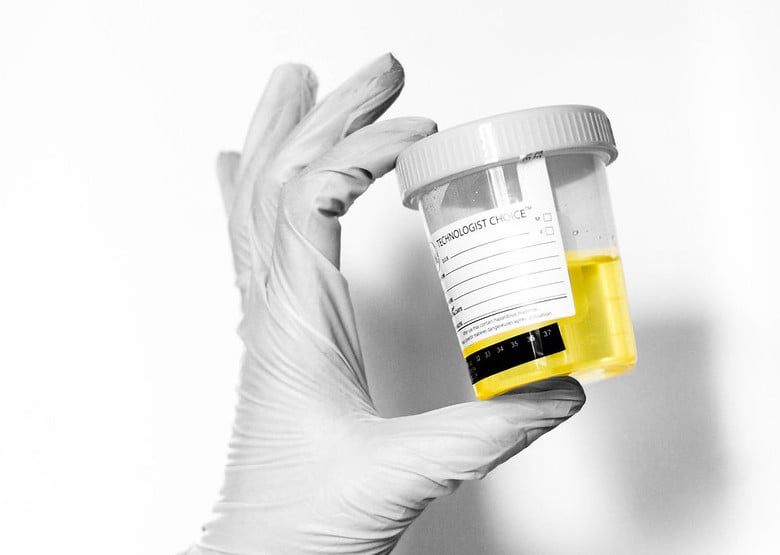Researchers at the University of Maryland have finally found the elusive answer to a question that’s likely crossed the mind of anyone with a bladder: Why is pee yellow?
While scientists have attributed the yellowish pigment to a chemical known as urobilin for more than a century, no one had ever been able to identify just what created that chemical in our bodies. Now, thanks in part to advances in genome sequencing, UMD researchers have the answer.
According to their study published in the science journal Nature on Wednesday, the yellow chemical in urine is created by a specific enzyme—which UMD researchers named BilR, or “bilirubin reductase”—that’s produced by certain microbes in your gut.
“That the yellow color of urine comes from your gut microbes, rather than another source, is pretty fascinating,” said Brantley Hall, the study’s lead author and an assistant professor in UMD’s Department of Cell Biology and Molecular Genetics.
Here’s the Cliffs Notes on how it works: When your body’s red blood cells start to break down, they produce an orange-ish byproduct called “bilirubin” that’s channeled into the gut. This is where the magic happens. Inside the gut, microbes produce the newly discovered (but long at work) enzyme, BilR, that breaks down some of the bilirubin into urobilinogen, which then becomes urobilin. Voila—yellow pee.
But the study has more significant ramifications than just piecing together a bathroom curiosity. Its findings could help us better understand how our gut’s microbiome affects jaundice in newborns as well as inflammatory bowel disease.
“The headlines are all about urine color, but what really led us into [this research] is the cause of neonatal jaundice,” says Hall. “There are probably many causes, but we hypothesized that the absence of bilirubin-reducing microbes might be a cause. To better explore that angle, we first needed to find which microbes reduce bilirubin into urobilinogen.”
After doing just that, their hypothesis is looking more promising. According to the research, while the enzyme BilR appeared ubiquitous in nearly all healthy adults, it was often absent in newborns, who are highly prone to developing jaundice, a yellowing of the skin that’s caused by too much bilirubin circulating in the bloodstream. While jaundice in newborns usually isn’t a cause for alarm (in fact, some research estimates that 60 to 80 percent of newborns develop jaundice at some point), it can occasionally become dangerous and cause brain damage, especially for patients without access to good healthcare.
That’s why Hall hopes the enzyme BilR could someday be used help treat jaundice in newborns through the delivery of probiotics. Of course, much more research needs to be done first. In the meantime, the University of Maryland has filed a provisional patent on the enzyme BilR.
“It gives us the preliminary evidence we need to conduct observational human studies, where we look at infants and we correlate their levels of serum bilirubin with the presence of bilirubin-reducing microbes in their gut and figure out whether those two things are correlated or not,” said Hall. “We think they might be, but we don’t know yet.”
For now, Hall and his team are pleased to have finally found the mystery enzyme that’s at work inside us—and whose handicraft we see nearly each time we use the bathroom. “It’s remarkable that an everyday biological phenomenon went unexplained for so long,” Hall told Maryland Today. “And our team is excited to be able to explain it.”


















